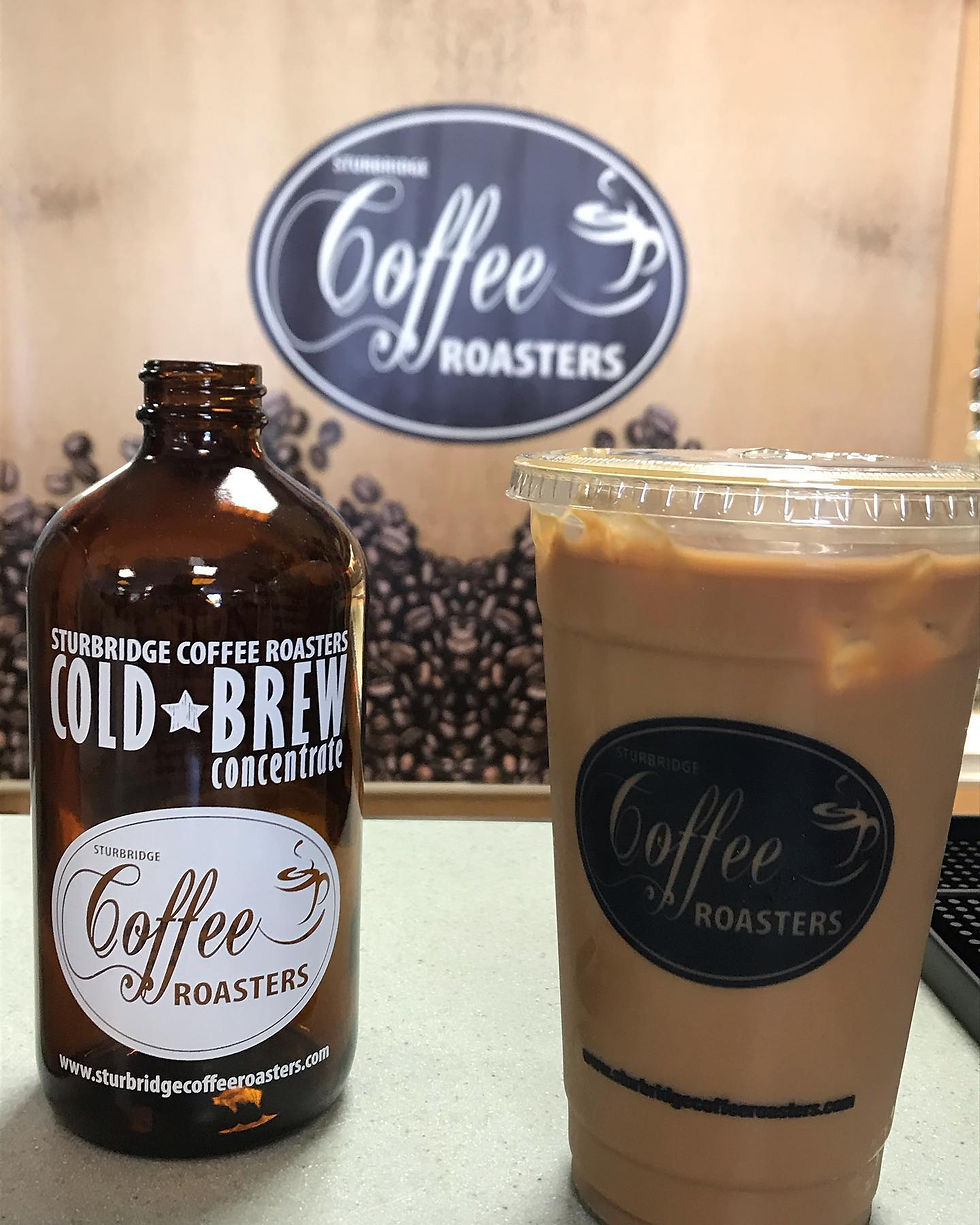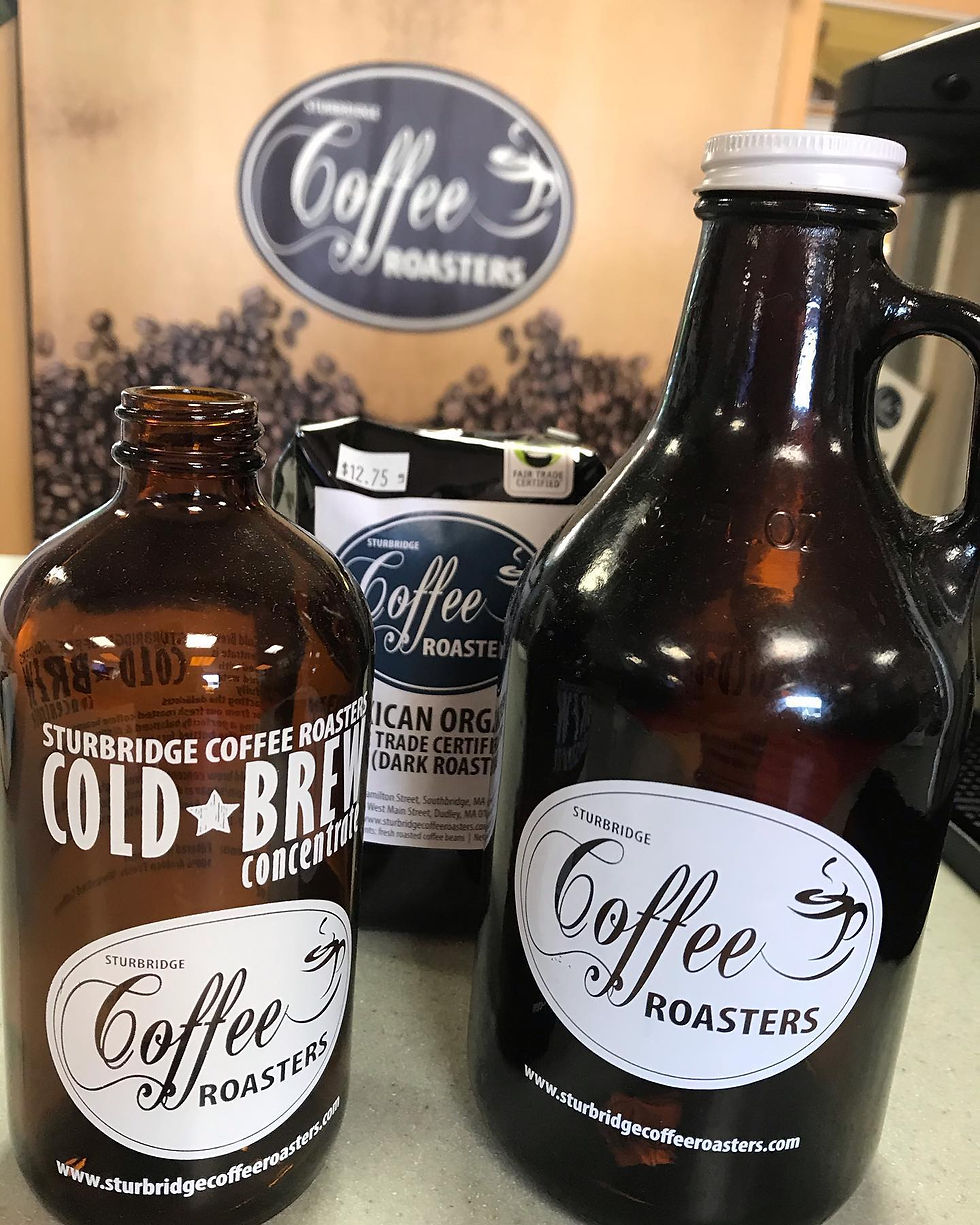Java Beat: Cold Brew
- Sturbridge Coffee Roaster

- Jul 1, 2020
- 4 min read
This article originally published in The Sturbridge Times, July 2020 By Elvis Dyer, Owner/Roaster, Sturbridge Coffee Roasters
Iced coffee is brewed hot and served cold (either by pouring over ice or refrigerating it before serving). Cold brew coffee is made by steeping coarsely ground coffee beans in room-temperature water for anywhere from part of day to days, which creates a coffee concentrate you mix with cold water/ice or milk. Cold brew is not iced coffee and iced coffee is not cold brew. That’s really important to remember when you are frequenting your favorite café and make sure they know the difference.
Cold brew offers consumers a different experience of coffee. When you pull an espresso shot, all the flavors are compressed together so you may not be able to pick them up. In cold brew, the flavors are more spread out, so it’s easier to pick up the flavor notes and nuances.
Cold Brew History
Even though cold brew seems to be relatively new, it is believed that the Dutch were the first to create cold brew coffee in the 17th century. Dutch sailors used this coffee brewing method as a means to preserve coffee concentrate for long stints at sea. The cold brew coffee took up less storage space and made caffeine more accessible for the sailors. It is also believed that the sailors would mix some of the concentrates with hot water to produce a hot coffee rather than drinking it cold. By the late 1800’s cold brew coffee had started to make its way to other parts of the world and various types of cold coffee had started to make an appearance in England and America where this coffee concentrate was a staple in military supplies. France later refined this simple coffee concentrate to become the drink as we know it today.
Later in the 1960’s a garden nursery owner Todd Simpson took a trip to Peru to source new shrubs and plants for his business. It was while Todd was in Peru that he discovered Peruvian cold brew coffee for the first time. When he returned, he started experimenting with cold brew coffee and later produced the Toddy Cold Brewing System, which is one of the more popular cold brewing systems used by individuals and commercial businesses today.
Is it brewed with Cold Water?
Since it’s called “cold brew” is cold brew brewed with cold water? The term serves to differentiate it from traditional iced coffee, which is coffee that required heat in the brewing process (and is then chilled), whereas cold brew does not. Cold brew coffee can be started anywhere from room temperature to below, so not necessarily brewed in ice-cold water. The key is making sure heat/hot water is not part of the process. This water temperature not only yield a bigger and better flavor, it provides a lower acidity level.
Making cold brew is also a longer process. Although simple to make, time and planning are important. Other coffees can be ready in 5 minutes or less, however, cold brew takes time as the brewing process can be anywhere from 24 hours to days, depending on how the person makes it. That’s why sometimes you will see it sold out at places, because it’s not something that can be made in minutes. Cold brew certainly takes planning.
How do I brew?
Coffee grounds in cold brew need to be coarse. The smaller a coffee ground, the faster it extracts. This is why espresso machines pull shots through a finer grind. Cold brew is extracting for an extended period of time, so you don’t want to over-extract your coffee. Using a larger grind size will make sure this doesn’t happen. And the coarser grind is easier to filter at the end and eliminates coffee sediment in your finished cold brew. The immersion method is simply the process of steeping these coffee grounds in room temperature/cold water. Once the coffee grounds have finished steeping, they are then strained by using a regular paper coffee filter, muslin, cheesecloth, a French Press, or even felt. The other option is to use a slow cold drip, or Japanese Kyoto style, which is a brewing device that utilizes an extremely slow dripping method of cold water over a bed of coffee grounds.
More than the Drink
Cold brew can be used for many things other than enjoying over ice. We recommend experiencing the fullest taste and experience of cold brew by drinking it on its own, however, we’ve seen many other ways to use it and bring out the flavor – including mocktails, cocktails, cake, ice cream, etc. And, if you are not a cold coffee drinker, you can heat it up on the stove or microwave and drink it as hot coffee (while maintaining the complex flavor profiles and lower acidity).
Caffeine Content
Is cold brew loaded in caffeine? Yes, and depends. There are a lot of factors that come into how much caffeine is in the cold brew you purchase or make, including the type of coffee beans used, roast level, brew time, and coffee to water ratio. Just like hot or iced coffees, the cold brew flavor will differ depending on these factors.
Nitro cold brew has also hit the mainstream market. For this beverage, cold brew is mixed with nitrogen gas at a high pressure and then served through a tap. This produces a cascade effect as the nitrogen is released and leaves you with a foam top, similar to what you would find in beer.
Cold brew may sound fancy, and although there are a lot of factors involved in a delicious glass of cold brew, you can make it at home. The key is to steep your grounds well in advance of when you want to drink it. Although there are dedicated cold brew makers, all you need to make cold brew is coffee grounds, water, a container and something to filter out the grounds at the end. Then you just have to strain, pour and mix (with water, ice, milk, etc.) and enjoy!







Comments